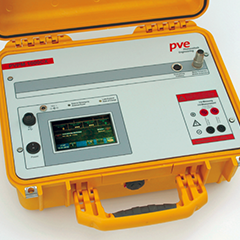In this exclusive technical feature, Klaus M. Schulte
of PV-Engineering GmbH outlines how monitoring and measuring can make a vital difference to the effectiveness
of a PV system – and how conventional methods may not provide the best feedback.
Photovoltaic systems generally do not contain serviceable elements, which is one of the main advances of the PV technology in relation to other technologies. Nevertheless several technical problems can guide to less energy yield and subsequently to a loss of money. This is why PV systems need frequent monitoring and checks, beginning with the check of the feed-in over alarms generated by inverters up to online monitoring systems. Additionally, a visual inspection should be done frequently, which may show surface pollution, damages or for example bird droppings (which may reduce the power of the module significantly!).
Several standards like the EN 62446 specify necessary measurements for the technical documentation of a newly built or already working PV installation.
At least if a loss of energy yield is detected, the reason for this misbehaviour has to be detected urgently.
Different instruments allow the inspection of different attributes of the PV generator: thermal imaging cameras can show regions with higher (hot spot) or lower temperatures, where these temperature differences may be the result of technical problems in the module under test. Electro-luminescence cameras are able to show defects in the structure of the PV cells very clearly.
But neither of these methods allow the determination of the Peak Power (which is the maximum power under Standard Test Conditions) of the modules under test, which is relevant for claims since this value is warranted at the sales date.
That is why it is so important to check the real installed Peak Power directly after installation and each time you are in doubt. The check at the installed generator is most ideal, since every dismounting/mounting of modules costs a lot of time, money and includes the risk of damages to the modules.





























